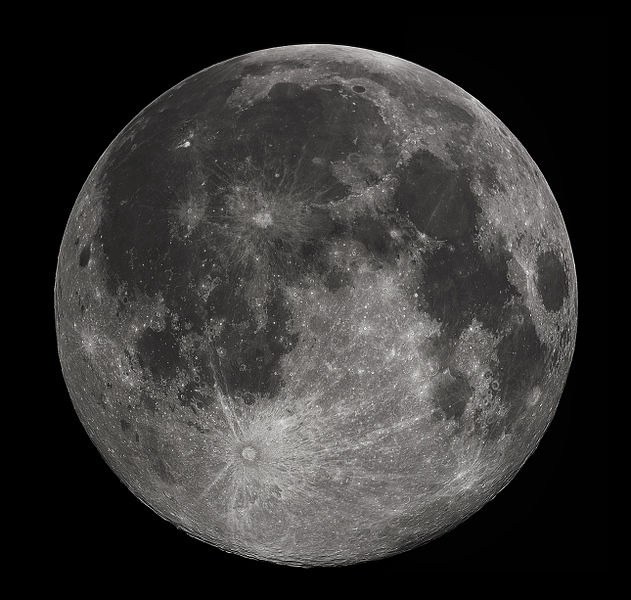
REHOVOT, ISRAEL—March 12, 2012—There’s something poetic about gazing up at the night sky, seeing the familiar face of the Man in the Moon” who faithfully accompanies us through life. The synchronous rotation of the Moon taking the same amount of time to spin around its own axis as it does to revolve around Earth is what causes the Moon to “lock eyes” with Earth, resulting in one of its hemispheres constantly facing us. But is there a reason why this particular half of the Moon locked with Earth, or was it pure coincidence that it didn't “turn its back” on us?
Through careful analysis and simulations, Prof. Oded Aharonson of the Weizmann Institute of Science’s Center for Planetary Science, Prof. Peter Goldreich of the California Institute of Technology, and Prof. Re’em Sari of the Hebrew University of Jerusalem have shown that it is not coincidence, but the Moon’s geophysical properties that determine its orientation. Their findings were recently published in Icarus.
The near side of the Moon is low-lying and covered by craters filled with dense, dark, volcanic material, the pattern of which creates the “Man in the Moon” image. In contrast, the far side is predominately made up of higher mountainous regions. “Intuitively, we might actually have expected the far side to be facing us as the high mountains, as opposed to the low craters, would have brought the Moon closer to Earth, putting the system in a lower energy state,” says Prof. Aharonson. Nature usually prefers lower energy states, so why isn’t this the case?
The motion of the Moon is a bit like the motion of toy train circling around a track with two hills and two valleys. The hills and valleys represent the different energy levels of the orientation of the geophysically asymmetric Moon. Because of friction, the train continues to lose energy until it doesn’t have enough to climb over the hill, thus settling into one of the valleys. The choice of valleys is governed not by the depth of valleys, but rather by the height of the hill it crossed for the last time. Similarly for the Moon, its maxima energy (the hills in our analogy) governs the ultimate state of the Moon, not its minima energy (the valleys).
According to the scientists’ simulations, the energy values calculated for the current geophysical characteristics of the Moon favor locking it in the current orientation. “In fact, by ’designing’ different models of the Moon — moving its mass around and altering various other parameters that affect its gravitational properties — we are able to have complete control over which ‘valley’ the Moon settles into,” says Prof. Aharonson.
Some might argue that the Moon would have locked with Earth very early in its existence, when its properties were quite different, and so these findings might not be relevant in explaining the actual events. The scientists, and indeed some evidence, suggest that the other side of the Moon could have been facing Earth at some point, but was hit out of sync and then later relocked into the current orientation, as described by the new findings.
Says Prof. Aharonson, “For me, what is most interesting is not seeing the Man in the Moon, but the elegance of how the system works.”
Prof. Aharonson would like to acknowledge support from the Lunar Reconnaissance Project.
Prof. Oded Aharonson's research is supported by the Estate of Joseph and Erna Lazard.
